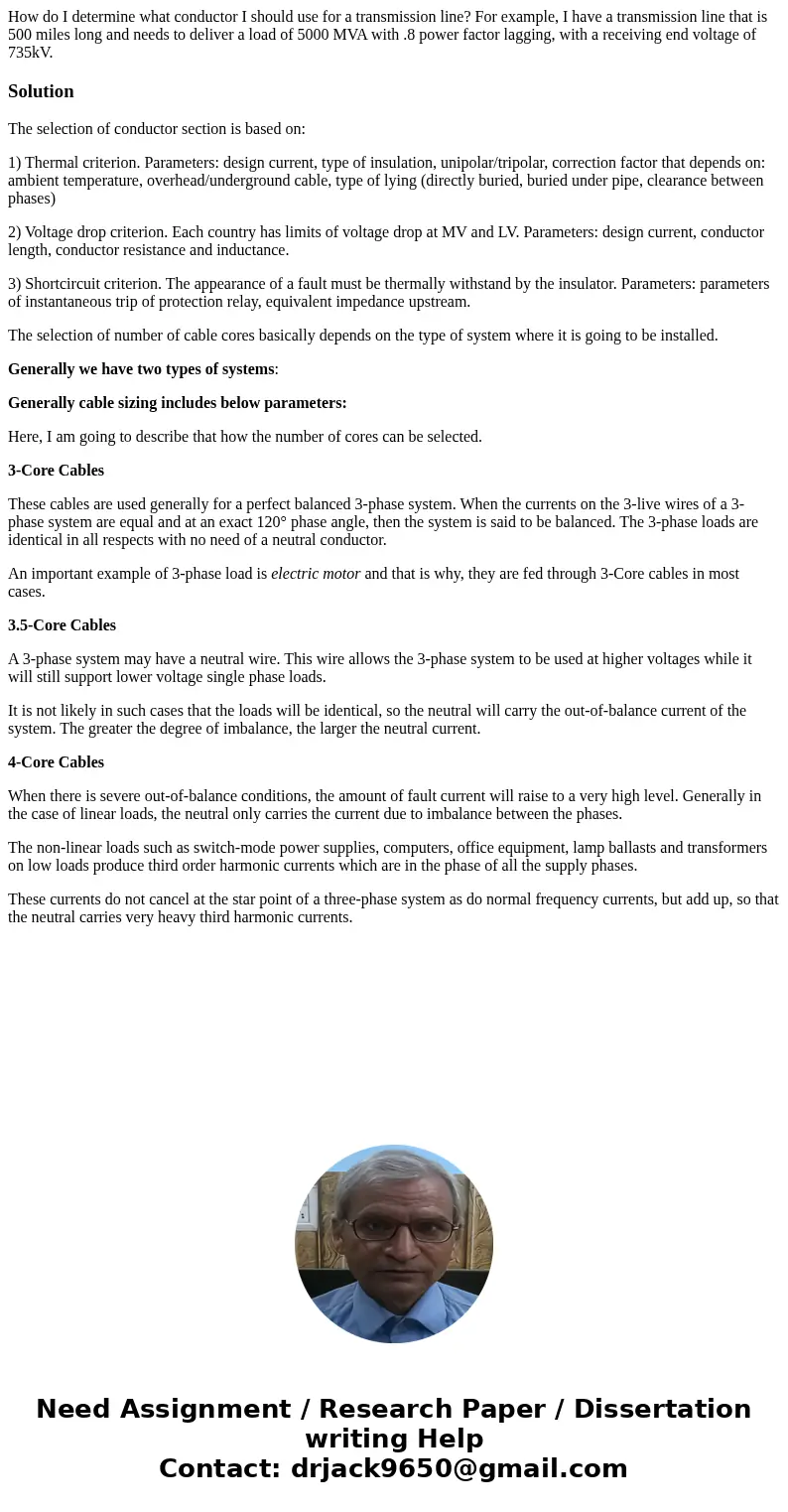How do I determine what conductor I should use for a transmi
How do I determine what conductor I should use for a transmission line? For example, I have a transmission line that is 500 miles long and needs to deliver a load of 5000 MVA with .8 power factor lagging, with a receiving end voltage of 735kV.
Solution
The selection of conductor section is based on:
1) Thermal criterion. Parameters: design current, type of insulation, unipolar/tripolar, correction factor that depends on: ambient temperature, overhead/underground cable, type of lying (directly buried, buried under pipe, clearance between phases)
2) Voltage drop criterion. Each country has limits of voltage drop at MV and LV. Parameters: design current, conductor length, conductor resistance and inductance.
3) Shortcircuit criterion. The appearance of a fault must be thermally withstand by the insulator. Parameters: parameters of instantaneous trip of protection relay, equivalent impedance upstream.
The selection of number of cable cores basically depends on the type of system where it is going to be installed.
Generally we have two types of systems:
Generally cable sizing includes below parameters:
Here, I am going to describe that how the number of cores can be selected.
3-Core Cables
These cables are used generally for a perfect balanced 3-phase system. When the currents on the 3-live wires of a 3-phase system are equal and at an exact 120° phase angle, then the system is said to be balanced. The 3-phase loads are identical in all respects with no need of a neutral conductor.
An important example of 3-phase load is electric motor and that is why, they are fed through 3-Core cables in most cases.
3.5-Core Cables
A 3-phase system may have a neutral wire. This wire allows the 3-phase system to be used at higher voltages while it will still support lower voltage single phase loads.
It is not likely in such cases that the loads will be identical, so the neutral will carry the out-of-balance current of the system. The greater the degree of imbalance, the larger the neutral current.
4-Core Cables
When there is severe out-of-balance conditions, the amount of fault current will raise to a very high level. Generally in the case of linear loads, the neutral only carries the current due to imbalance between the phases.
The non-linear loads such as switch-mode power supplies, computers, office equipment, lamp ballasts and transformers on low loads produce third order harmonic currents which are in the phase of all the supply phases.
These currents do not cancel at the star point of a three-phase system as do normal frequency currents, but add up, so that the neutral carries very heavy third harmonic currents.

 Homework Sourse
Homework Sourse